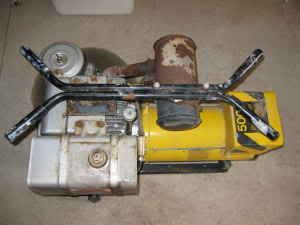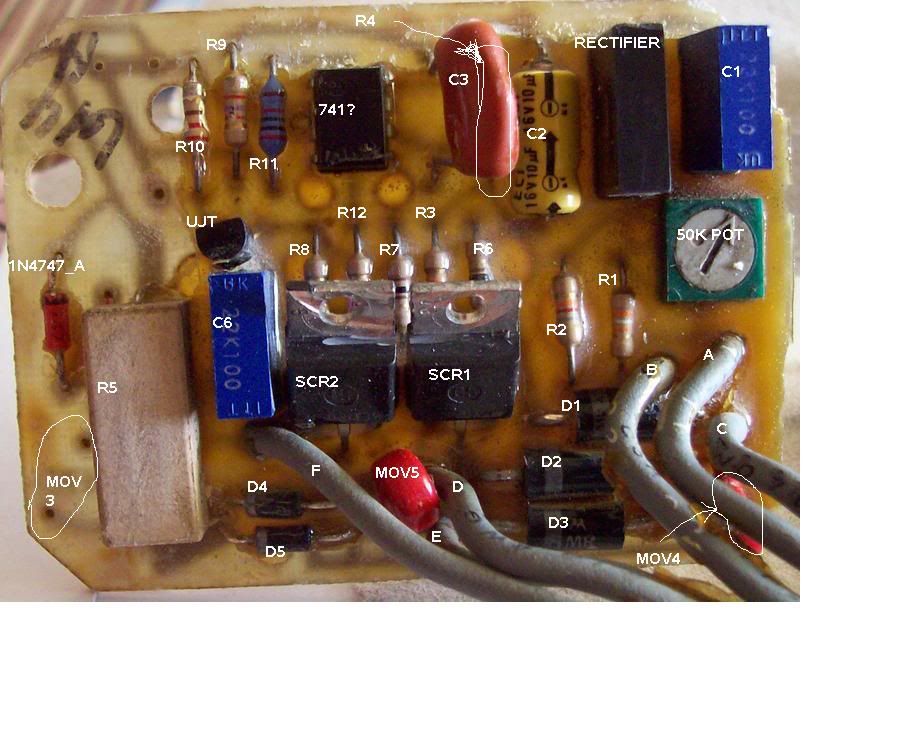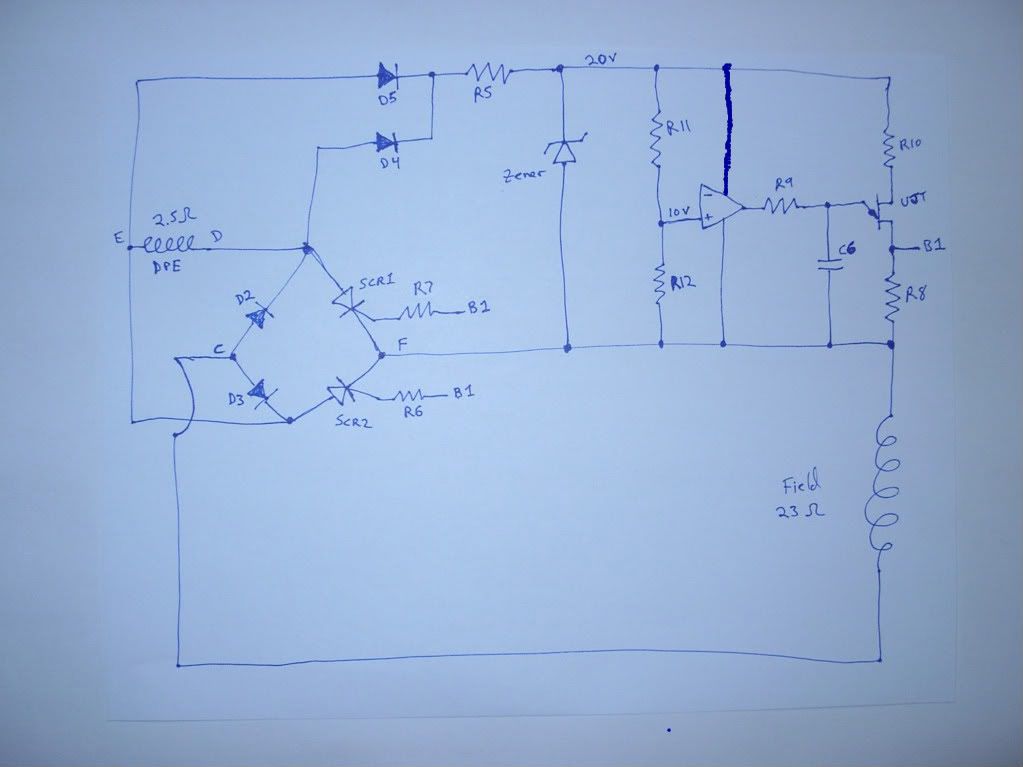First post here at smokstak. I found this forum while doing research on my new to me but very old JC Penny 5000 watt generator. It's made by Generac and has a 10 HP Briggs side valve engine.
The voltage regulator board is identical to the MC-40 PCB posted here. There is only one part difference that I can tell, my board has an extra MOV.
Anyway, my generator runs but the voltage output was low. The 120 was at 36 volts, with the 220 at 72 V.
So I started the tear down and inspection process last weekend and finally got around to removing the potting from my PCB. Whew, what a mess
I'm about finished with the schematic drawings and I also know that at least one part on my PCB is fried. It happens to be the extra MOV, and it's shorted out depriving the Op-Amp IC of power.
If anyone is interested in my work, please reply and let me know that there is still interest in this old voltage regulator. I can post schematics and continue the discussion on this circuit.
I was looking around to see if anything newer could be easily built, but there are no complete schematics of a better circuit that I could find on the internet. If you know of any, please post a link. I'd like to compare this old op amp circuit to more modern designs.
Here is a photo of this old 1978 JC Penny generator:


The voltage regulator board is identical to the MC-40 PCB posted here. There is only one part difference that I can tell, my board has an extra MOV.
Anyway, my generator runs but the voltage output was low. The 120 was at 36 volts, with the 220 at 72 V.
So I started the tear down and inspection process last weekend and finally got around to removing the potting from my PCB. Whew, what a mess

I'm about finished with the schematic drawings and I also know that at least one part on my PCB is fried. It happens to be the extra MOV, and it's shorted out depriving the Op-Amp IC of power.
If anyone is interested in my work, please reply and let me know that there is still interest in this old voltage regulator. I can post schematics and continue the discussion on this circuit.
I was looking around to see if anything newer could be easily built, but there are no complete schematics of a better circuit that I could find on the internet. If you know of any, please post a link. I'd like to compare this old op amp circuit to more modern designs.
Here is a photo of this old 1978 JC Penny generator:












